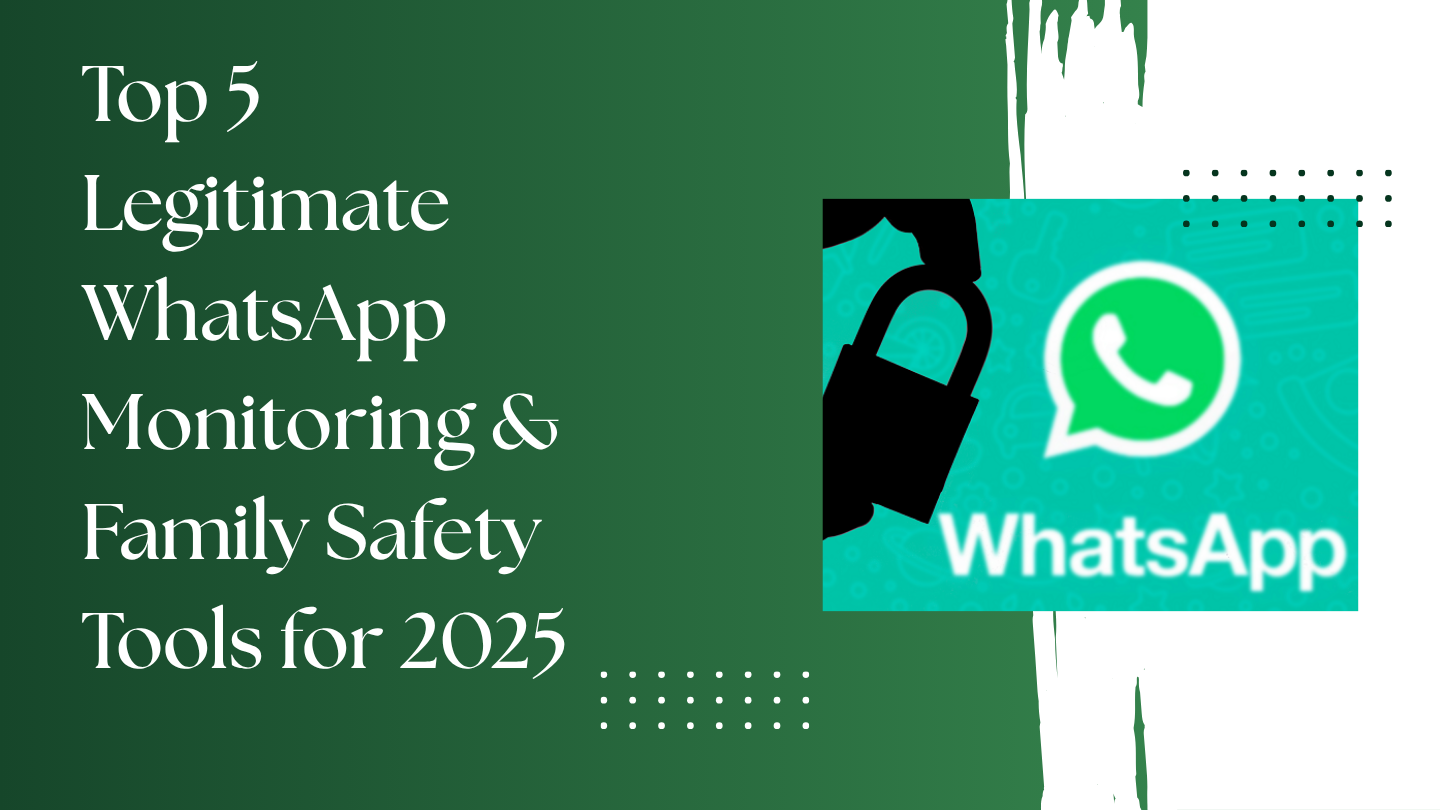In 2025, WhatsApp remains a primary communication channel for families, students and professionals. But parents, guardians, and employers sometimes need tools that help ensure safety, reduce online risks, and manage screen time—always with consent and respect for privacy. This guide lists five ethical, privacy-focused tools and approaches for monitoring and protecting WhatsApp use, plus best practices to keep accounts secure.
Keywords: WhatsApp monitoring, parental control apps, WhatsApp safety, digital wellbeing, consent monitoring, two-step verification, screen time management.
Why choose ethical WhatsApp monitoring in 2025?
Unreported or secret tracking of messages or activity is both unethical and illegal in many jurisdictions. The safer path is consent-based monitoring (for example, monitoring a child’s device with parental consent or managing company phones that employees agree to). Ethical tools focus on safety, transparency, and digital wellbeing rather than surveillance. They help reduce cyberbullying, spot risky contacts, and enforce healthy screen time without invading private conversations.
What to expect from a legitimate WhatsApp-focused safety tool
A responsible WhatsApp safety solution should:
- Respect end-to-end encryption: do not try to access message contents stored only on another person’s device.
- Provide activity summaries (time spent in the app, number of calls, frequency of contacts) rather than message contents.
- Offer screen time and usage controls that limit total WhatsApp minutes.
- Include contact management features to flag unknown numbers and promote safe contact lists.
- Work with parental consent and transparent reporting—no hidden monitoring.
- Protect collected metadata and comply with local privacy laws.
Top 5 privacy-first tools & approaches for WhatsApp safety (2025)
- Parental Control Suites (consent-based)
- Modern parental control suites provide app usage reports, screen time scheduling, and content filters. For families, these tools allow guardians to set daily WhatsApp limits, receive alerts for sudden spikes in usage, and block app access during study or sleep hours. They emphasize transparency—children see the controls and understand why they’re in place.
- Device-level Screen Time & App Limiters
- Built-in device features (Android Digital Wellbeing and iOS Screen Time) let you set app limits, downtime and focus modes. These tools don’t read messages but give accurate totals of time spent on WhatsApp and allow temporary or scheduled restrictions. They’re easy to set up with family sharing and are ideal for guardians who want simple, privacy-safe controls.
- Family Safety Platforms with Consent Management
- Family safety platforms combine location sharing, emergency check-ins, and app usage summaries. They provide consent flows so each family member explicitly agrees to the monitoring arrangement. These platforms are useful for younger teens who need oversight but also want a degree of autonomy.
- Managed Business Device Solutions (for employers)
- For company-owned phones, mobile device management (MDM) and enterprise mobility management (EMM) solutions can enforce permitted app lists, usage policies, and remote wipe capabilities. These solutions require a signed policy and transparent employee consent. They do not break WhatsApp encryption; instead they control which apps are allowed and when.
- Education + Digital Wellbeing Programs
- The most effective “tool” is a program: digital literacy and safety education for teens and adults. Pair any technical control with conversations about privacy, phishing risks, contact screening and healthy online habits. Awareness reduces the need for heavy monitoring and builds trust.
How to implement consent-based WhatsApp safety in your home or organization
- Start with a clear agreement
Explain what will be monitored (time spent, app launches, contacts flagged) and what won’t (message contents). Get explicit consent from the person whose device will be monitored—ideally in writing for workplace devices. - Use multi-layer protection
Combine device screen-time tools with safety-focused family apps and education. This reduces dependency on a single product and balances privacy with protection. - Prioritize transparency
Make reports visible to both parties when appropriate. For teens, periodic review sessions with parents help build trust and teach better online behavior. - Respect legal and regional rules
Laws differ by country. In many places, monitoring an adult’s private messages without consent is illegal. Check local regulations before implementing any monitoring. - Keep data secure
Choose tools that encrypt stored metadata and offer clear retention policies. Delete old activity logs regularly and avoid services that monetize sensitive family data.
WhatsApp security & safety tips (must-do)
- Enable two-step verification: Protect the account with a PIN so SIM swaps or number re-registrations are harder.
- Review linked devices: Regularly check and unlink unknown or unused devices from WhatsApp Web/Desktop.
- Teach phishing recognition: Warn family members not to share verification codes or click suspicious links.
- Use strong phone locks: Biometric or strong passcodes make physical access to a phone harder.
- Back up responsibly: If you back up chats to cloud services, ensure backups are encrypted and access is restricted.
Mistakes to avoid
- Don’t use covert spyware: Installing surveillance software that captures private messages or keystrokes is illegal and harmful.
- Don’t over-monitor: Excessive control can damage relationships and teach avoidance behaviors.
- Don’t neglect education: Controls without conversations won’t stop social engineering or risky behavior.
- Don’t ignore consent: Monitoring without clear consent can have legal consequences and ethical costs.
Final takeaway
In 2025, the goal for any WhatsApp monitoring should be safety, not surveillance. Use consent-based parental controls, device screen time features, and enterprise device management where appropriate. Bolster tools with strong account security and ongoing digital literacy education. That combination protects loved ones and employees while respecting privacy and legal boundaries.
This approach keeps communities safer and preserves trust—because good monitoring is transparent, proportionate and always consensual.

